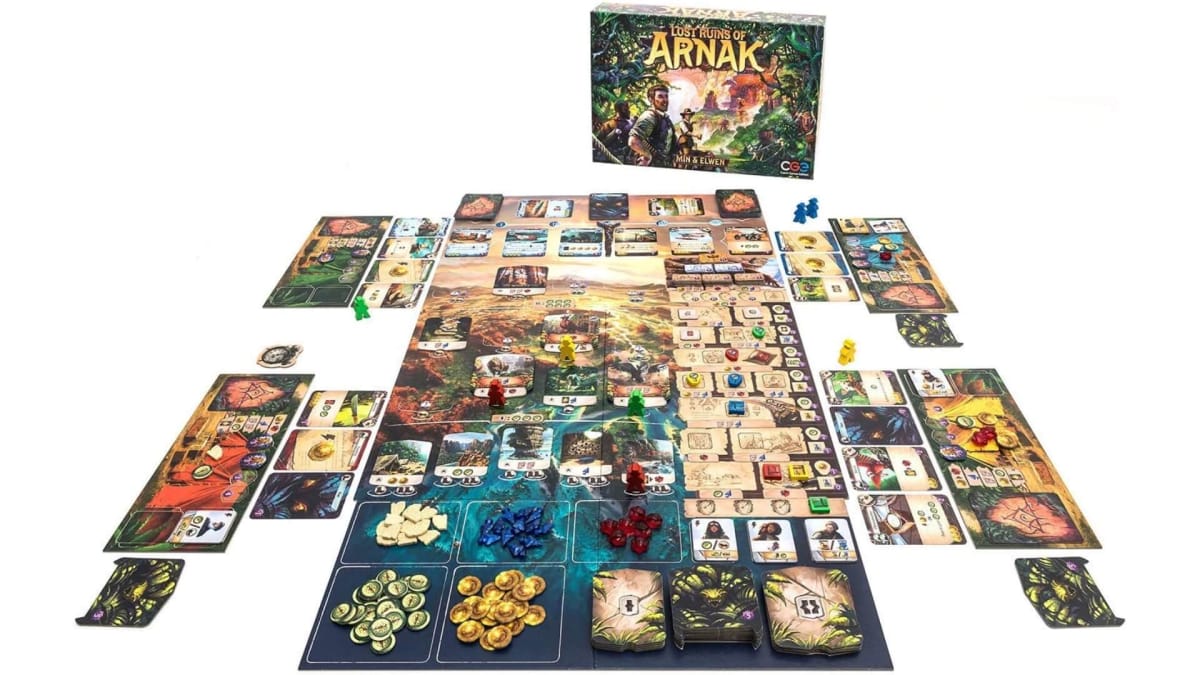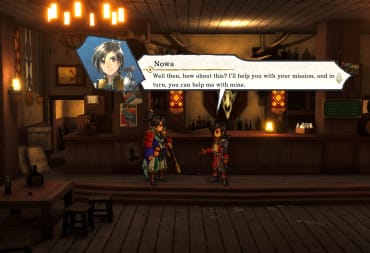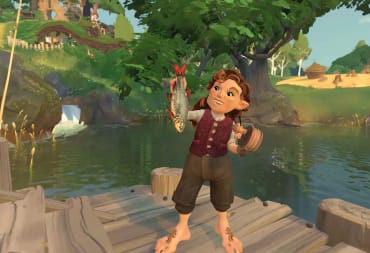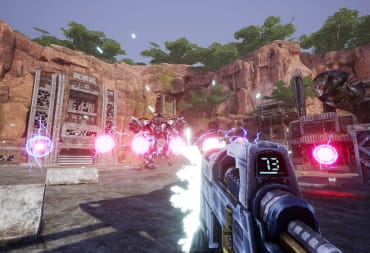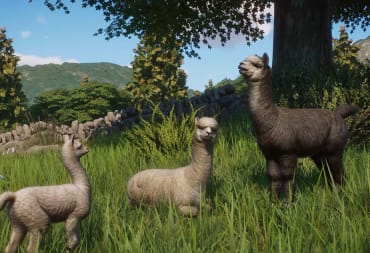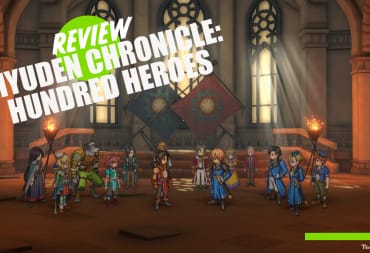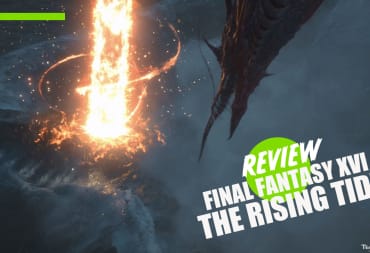From high above in your rickety charter plane, the island of Arnak seems like little more than a swath of green jungle in a sea of sparkling, dazzling blue. But you know hidden under that dense foliage are ruins of ancient, mysterious civilizations, long gone. What secrets await you down there? What incredible discoveries will you uncover? You've been preparing for this moment your entire life, you will uncover all this island has to offer. As you finally land and head out to set up a base camp, the buzz of mosquitos rises to a fever pitch. But wait, that's not mosquitos, that's the roar of another bi-plane engine. There's another research group coming to the island! And another! And another! Now you've got to outmaneuver your competitors, navigate this treacherous landscape, and keep an eye out for "the guardians," whatever that means. Can you make the most out of your trip to Arnak? Or will your rival explorers come out on top? This is the fundamental question at the heart of Lost Ruins of Arnak.
Lost Ruins of Arnak is a game of deck building and worker placement for one to four players, published by CGE. In Arnak, each player takes on the role of an exploration team that just landed on the fabled island of Arnak. Players take turns playing cards, moving their workers, and exploring the island to gain resources and, eventually, victory points. The player with the most victory points at the end of the fifth round wins the game.
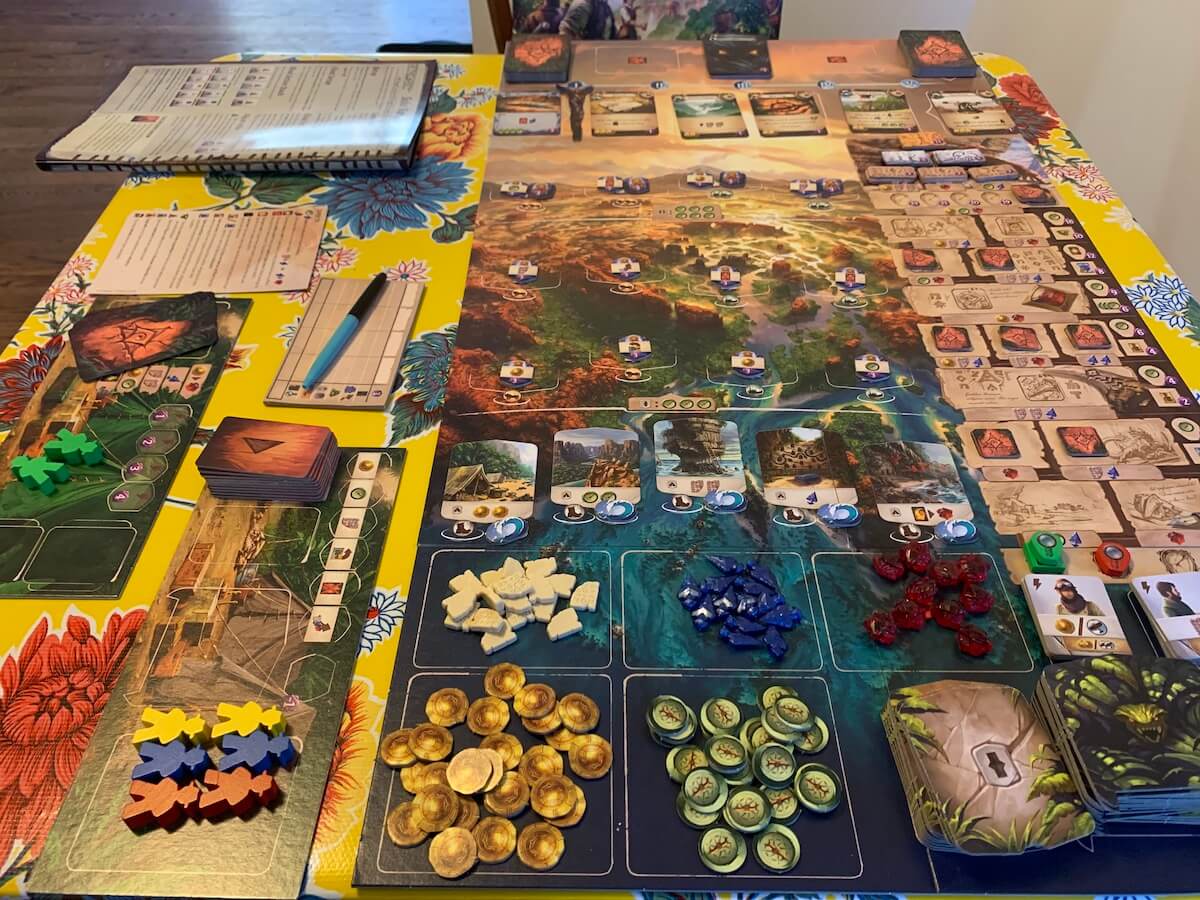
As mentioned above, there are two main game mechanics interwoven in Arnak. First, there's deck building: players start with a deck of six cards. Two cards give them the "compass" resource, two cards give them the "coin" resource, and two cards are "fear" cards, which do little (accept offer some mobility) and will penalize the player one victory point if left in their deck by the end of the game. As players explore the island, they'll have the option to buy item or artifact cards a track at the top of the board. Those cards are added to each player's deck, and allows them to hone, sharpen, and focus their decks (which are the engines the rest of the game needs to run).
The second interlocking game mechanic is worker placement. You have two little fedora-wearing wooden tokens representing your explorers (we often call these wooden tokens "workers" regardless of their metaphorical function) that you can place on various points on the board to gain resources, explore new ruins, and encounter dangerous guardians (giant monsters who offer a large point bonus if defeated, but who penalize with fear cards if left unattended).
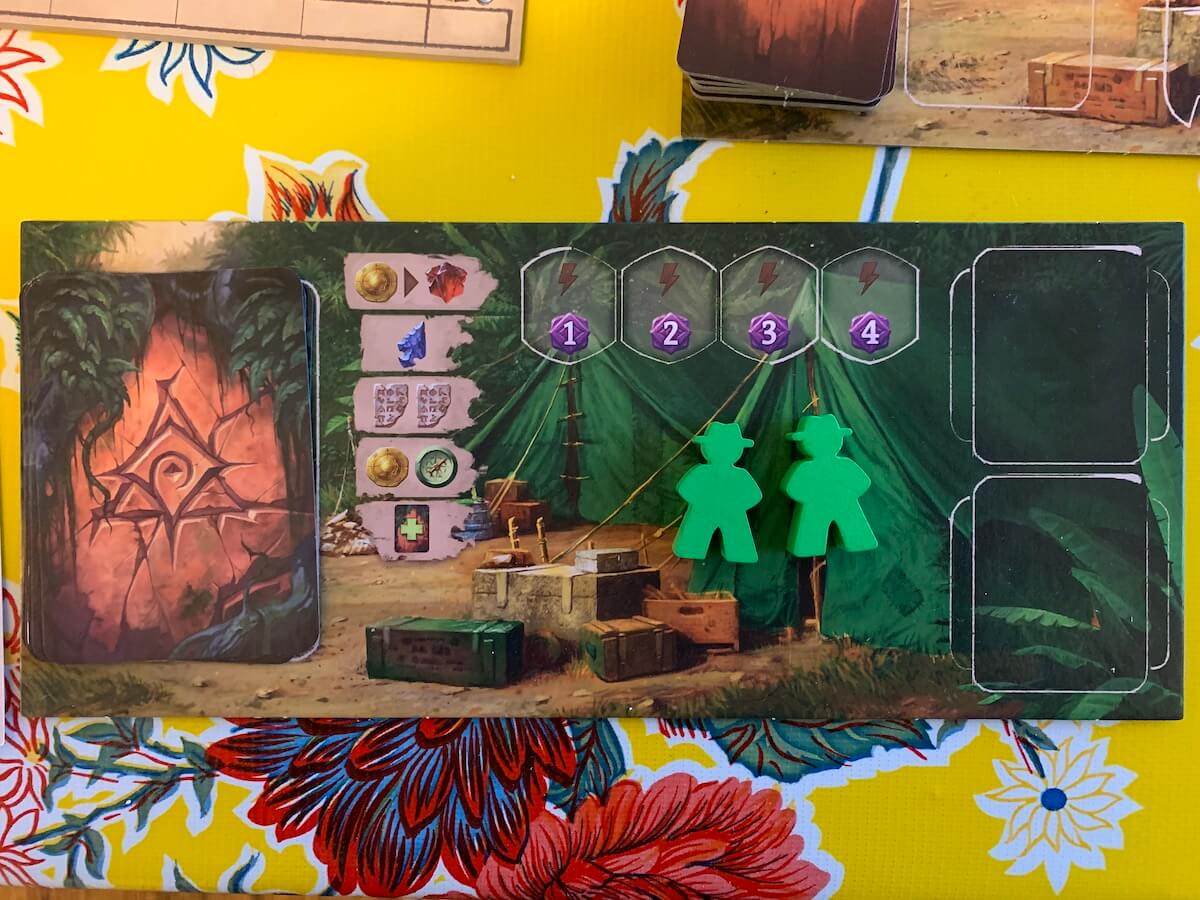
There are other fun mechanics, including an entire side of the board where you can research your findings for bonuses and powerful assistants who can help with your studies, but I'll leave those for you to discover.
By honing your deck, utilizing cards you purchase, and moving your two workers with purpose and forethought, you'll soon rack up a nice collection of victory points. And it is in this melding of deck building and worker placement that Lost Ruins of Arnak distinguishes itself among its modern peers. It feels perfectly split between both mechanics. You'll likely need to enhance your deck to stay competitive, but you won't find piles and piles of cards to choose from. And you'll also need to think critically about where you put each of your workers each round, but there are plenty of other things to do on your subsequent turns after you've placed your two workers. That balance keeps the options open, the strategies varied, and gameplay unique each play through.
And then there's the resource management aspect of Arnak. There are two types of games that deal with resources: games where you have a never-ending flow of actions and supplies, and games where you feel like you're begging for scraps of resources. Both offer their own challenges and pleasures, and Lost Ruins of Arnak sits squarely in the second category. Resources are scarce, powerful cards are expensive, and it costs a lot to explore new locations. This is not a bad thing: the game would not have the same excitement without this resource scarcity. But it's not for the type of gamer who wants to hoard gold and spend their game deciding which of the most exciting and powerful cards they want to purchase. This is a game for the type of gamer who likes to just eek out enough coins to buy the card that will loosen the knot a bit next turn. This inherent tension between what a player wants (i.e. cool artifacts that can slightly break natural flow of the game) and what a player needs (i.e. to have enough resources to discover a new location and gain some points) is what makes Arnak so fun to play and explore.
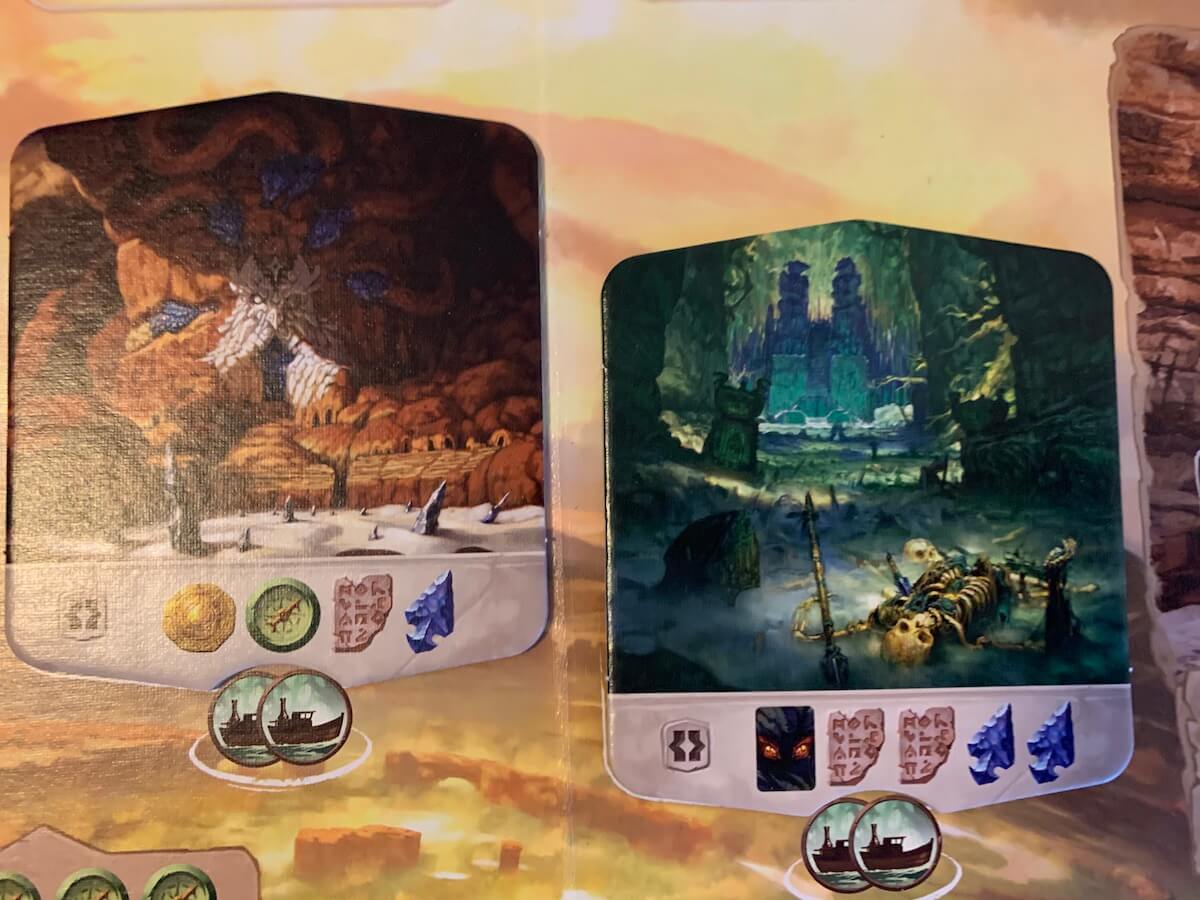
Lost Ruins of Arnak also includes a fantastic solo gameplay mode, which I tried multiple times (along with playing with varied groups of actual, living humans) for this review. I've played plenty of solo modes in games, but this was by far the most challenging (I lost, many times). In essence, you play against the game, and each of the six other explorer tokens (aside from your own two) are racing against you to gain victory points, research findings, and scramble around the map. I judge a solo gameplay mode by one simple criteria: was this enough fun to justify setting it all up and tearing it all down? The answer for Arnak is a resounding "yes!"
Finally, let's talk about the utterly gorgeous artwork, graphic design, and component design in this game. As you've seen from the photos above, Arnak truly looks like a high-quality game. From little plastic gems, tablets, and arrowheads that satisfyingly clink and rattle as you collect them, to individual, unique artwork on every single piece of cardboard, the game is a lush and aesthetically pleasing experience. It draws you in and immediately immerses you, and you're left with the feeling that no stone, visually speaking, has been left unturned, no corner has been cut. It's a visual masterpiece.
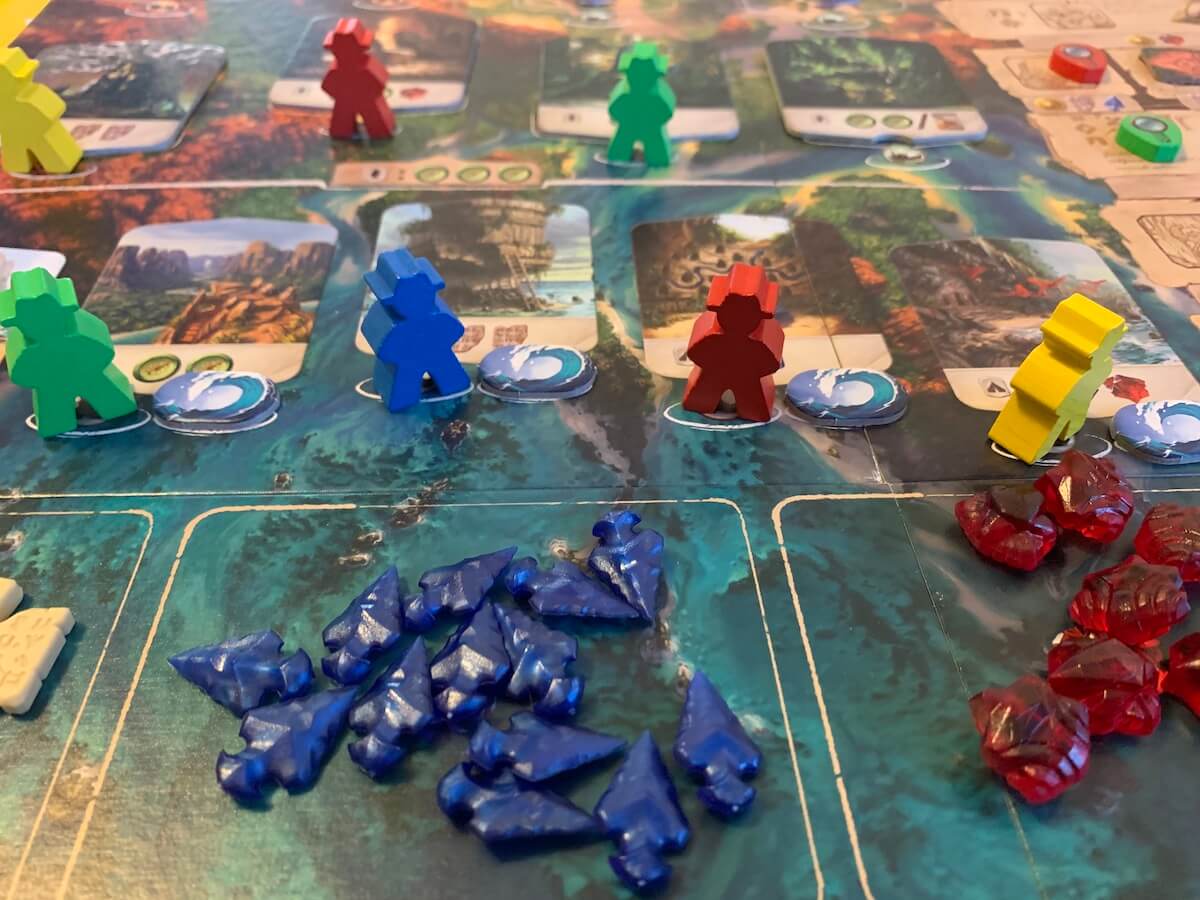
The Bottom Line
Lost Ruins of Arnak is one of those rare games where every thing it does is working for me, and working really well. From the integration of theme perfectly melded into the mechanics, to the interplay of different systems, this is a game that truly runs smooth. There's no "grit in the gears," so to speak. Lost Ruins of Arnak deserves the attention of seasoned gamers, and tabletop players who have yet to wade into more mechanically intricate games (though it's by no means overwhelming). It is, at the time of this writing, my favorite release of the year.
Get This Game If
- You're a fan of games like Dominion, Lords of Waterdeep, Champions of Midgard, and El Dorado
- You like the idea of playing through an Indiana Jones-style Euro game
- You want to see the heights of modern gaming
Avoid This Game If
- You're only a fan of deck building or worker placement, but not both (they're well-mingled here)
- As mentioned above, you prefer games with bountiful resources and more turns than you know what to do with
- You prefer a less Euro-style game, and instead want dice to roll and dungeons to crawl
The copy of Lost Ruins of Arnak used in this review was provided by CGE.
Review Summary
Have a tip, or want to point out something we missed? Leave a Comment or e-mail us at tips@techraptor.net
